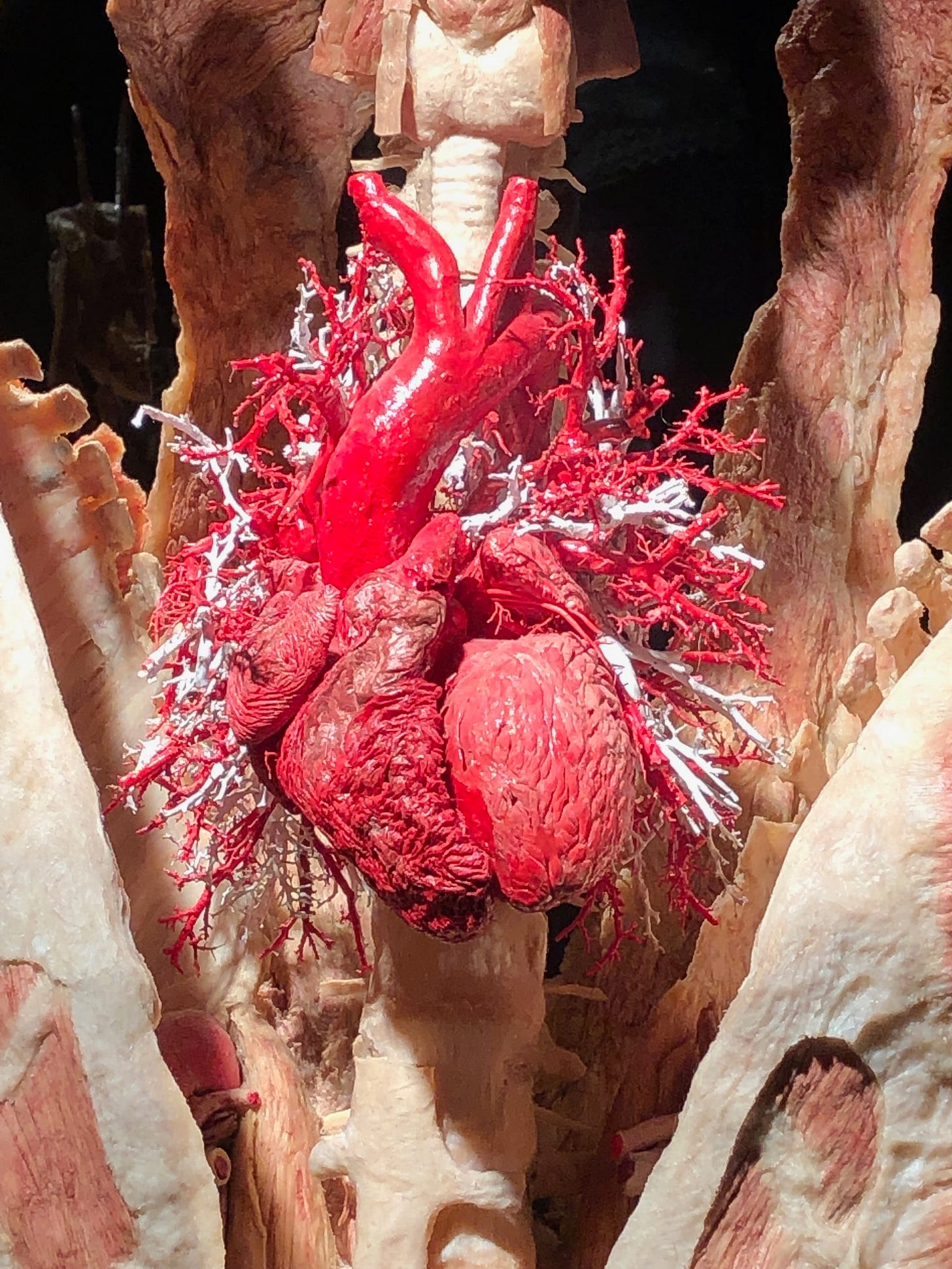The Utility of Pain
Living is remembering and becoming more of who we are.
At 10:00 on Friday night in the hospital emergency room, I filled out forms fast, haphazardly, with pain blurring my vision and bending me double in the chair. Then I waited in line looking like a devout Tibetan Buddhist in a perpetual bow, clutching my phone and water bottle and the crumpled form to my middle, which screamed in pain. I looked at my feet on the floor and I tried it: here are my feet on the floor. Here is the breath in my lungs, again, and here is my exhale.
In my twenties, I studied and practiced different types of Buddhism and a few things stuck with me. One is the discipline of presence, how being very present with whatever is right here, right now, greatly reduces the suffering layered on by the mind, which resists, fears, desires, grasps, and seeks to escape.
Another is the practice of tonglen, which couples with presence to become a tool specifically for acute pain. Tonglen is the imagining that, as you breathe into it, you are taking on the suffering for all of humanity, thereby lessening it for others. Holding it, then, is an altruistic and noble act.
Yet another idea that stayed with me from those studies was that learning is not really learning at all but remembering. Wherever we come from as we enter this world, we leave there already knowing everything. Being born is a process of forgetting. Living a human life is a process, slowly and over time, of remembering. Also re-membering — becoming more whole and more of who we really are.
Jess Graham in their memoir in essays, Being (Sick) Enough opens with the essay “When You Don’t Think You Can Survive It”, in which they describe each moment in its simplicity:
“This is my foot on the floor.
This is my other foot tucked under my leg on the couch.
This is the sound of the heater.
This is the smell of unwashed dishes in the sink.”
In a later essay, “Hacking Human Suffering,” they write more about this discipline of presence, the real utility of pain, and how holding it one finite moment at a time allows it to be not just bearable, but sometimes even a gift of sensation. In my favorite essay of the collection, “Upon Waking,” Graham writes of a daily practice that precedes all others and that sets the tone for living well with chronic illness and C-PTSD: the practice of remembering.
This remembering is also a deeply meaningful exercise in gratitude:
“I remember that I get to be here.
I remember that some strange and miraculous turn of events allowed
for me to exist.”
I get to be here. The red-hot poker inside my intestines that had me in the ER this past Friday night ended up being food poisoning. As I sit now, writing these words, the pain lingers. It varies in intensity from dull to sharp to red-hot again, and I have mostly suffered instead of staying meditatively with it using the tools I acquired as a young adult.
It is a place most uncomfortable — the hospital, the waiting room of the hospital, waiting to be taken back, crying openly, a display of human animal messiness. And discomfort even now, with the worst (at least this time) behind me, is hard to abide. I long to feel “back to normal” and do the thousands of things that need doing. My mind fears that the pain will stay, that it will worsen, and when it subsides, I worry it won’t be for long.
The same suffering layers over even my pleasurable moments: how long will it last? Will it be over too soon? With pain humans are resistant; of course that makes sense. It’s more challenging to comprehend why sometimes we resist ease and happiness as well.
In tonglen one links purpose to breath. On the exhale you breathe out positivity and goodness, your wish to alleviate suffering and pain. On the inhale you invite negativity and sorrow to enter your heart and meet with your human compassion so that its darkness can receive or transform into light. The challenge here is to stop seeing that pain as a problem you need to solve; to see suffering simply as part of the human condition. In other words, even in absence of solutions, we are meant to feel that every situation is workable.
There is my foot on the floor. There are moments I remember and re-member, and events I look forward to, and simple delights, like walking my dog in the warmth of the sun while hearing the joyful chanting of birds. I had a mentor in recovery once who said it best: there is at least as much joy available in a day as sorrow and pain. It’s up to you where you put your focus.



